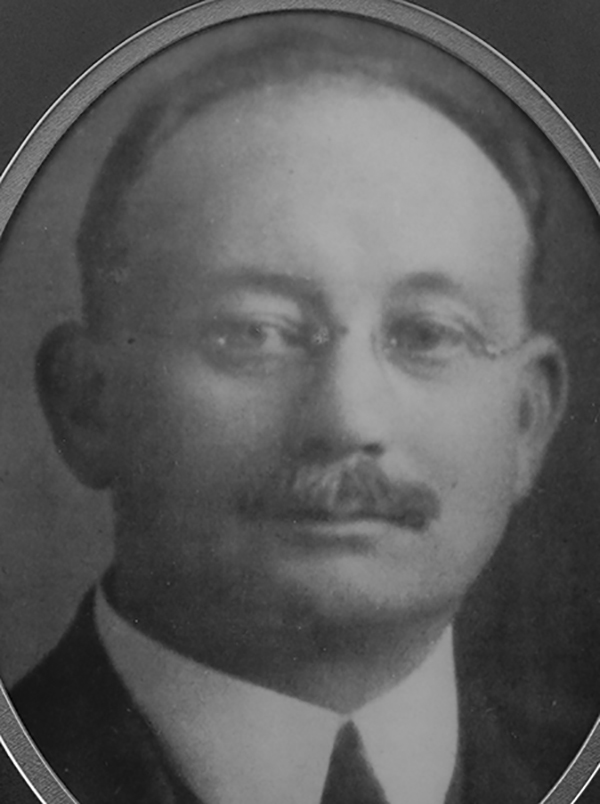Editor’s Note: The biographies in this edition were written by Northwestern News reporters Kaylea Brown and Gavin Mendoza. The information for the biographies of presidents between 1897 and 1997 comes from a book written by former Northwestern professor Wayne Lane, titled “Northwestern Oklahoma State University: A Centennial History.”
James E. Ament
1897 – 1902
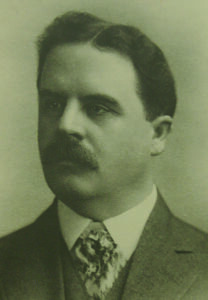
James E. Ament was the first president of Northwestern and helped make the school into a successful university. Ament was also a professor and taught pedagogy, psychology and ethics.
He was seen as a natural-born leader and a terrific educator. The first building at the school was built under Ament and was called “The Castle on the Hill.” The building had a maximum capacity of 600 students.
The first graduating class under Ament was in 1900.
A professor by the name of John Davis was hired under Ament and was named the director of the sports program. In 1898, the men at the school made a football team.
The first Northwestern baseball team was also created during Ament’s presidency in 1899. A new athletic field was built in 1900, and new activities started, including women’s basketball. Ament was asked to resign in January 1902.
T.W. Conway
1902 – 1908

T. W. Conway was the successor to James Ament and was well received when he began doing work. Conway hired 11 new faculty members after getting rid of six members from Ament’s staff. Conway increased the number of faculty to 23.
Conway had magazines and books added to the library, which was in the original university building. He also repaired the building and created a commercial course, which added a fourth way for students to receive a degree.
Extracurricular programs were fully established by the end of the fall term in 1902 under Conway. They were handled by the literary societies that were also created, titled “Orient” and “Occident.”
A new library and science building was built in 1907 under Conway. His presidency ended after the fall term of 1907.
Walter Lee Ross
1908 – 1910
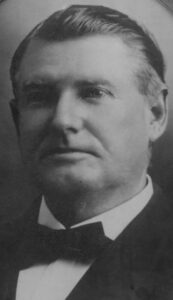
Under Walter Lee Ross, debate clubs and musical clubs were created. They were well received throughout the Alva community and school.
The school newspaper, The Northwestern, was created under Ross. It had been the first paper in three years and stayed the longest of the two.
Ross resigned in 1910 after students requested his resignation.
Grant Grumbine
1910 – 1916
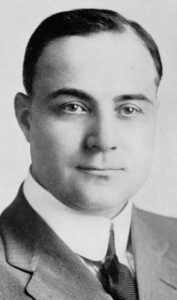
Grant B. Grumbine, like James Ament, was seen as a great leader and educator.
Many saw his way of running the school as professional and organized. In 1913, Grumbine helped lead an exhibit at the Oklahoma State Fair aiming to quell an effort to get rid of the school.
The students and staff under Grumbine all saw him as someone they could follow, and so did the community.
Under Grumbine, the education program at the school was improved.
Grumbine donated money to local chapels, which won over student popularity. Under Grumbine, the athletic program began to receive statewide recognition.
J.W. Graves
1916 – 1917
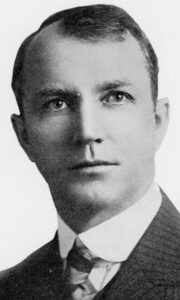
J. W. Graves had the shortest stint as president in Northwestern’s history.
He was a strong advocate for men and women participating in sports.
He traveled with the teams around the country, including to states such as Oregon, Colorado, Montana and Wyoming. Grave was unexpectedly transferred to Central State Normal College to end his run at Northwestern.
A.S. Faulkner
1917 – 1919
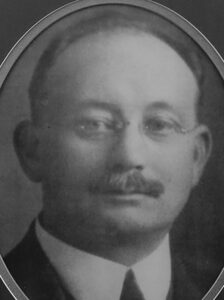
During A.S. Faulkner’s short tenure as president, he helped raise funds and provide supplies for World War I. During his years, enrollment was low because of the war. However, Faulkner was still a popular president.
He helped raise the number of faculty to 39 and had more than 600 teachers in the summer school program. Faulkner started two building contracts during his time, but neither of those bills would be passed during his presidency.
James Battenberg
1919 – 1928
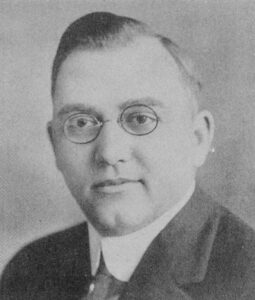
Under James P. Battenberg, the college was turned into a four-year teacher’s college. For the first time, it offered the opportunity for students to receive a bachelor’s degree.
Battenberg advocated for raising funds for the president’s house and for the student welfare fund. In 1919, he received funds for the construction of a gym. Reconstruction of sidewalks and walkways on campus also began.
In the summer of 1920, Battenberg started Northwestern’s first “senior school,” and more than 750 teachers attended. Battenberg took a leave of absence, and Sabin C. Percefull took over the president’s job.
Battenberg was up for election for the state superintendent of public instruction’s seat in 1922. Battenberg fought for better state appropriations for Northwestern and also pushed for budget increases at every session of Oklahoma Legislature during his campaign for superintendent. Battenberg resigned in 1928.
Walter W. Parker
1928 – 1933
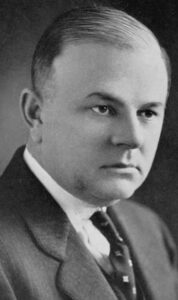
Walter W. Parker was the eighth president of Northwestern and was seen as a strong leader.
He helped Northwestern’s summer school for teachers to have more than 1,000 students.
He was thought of as an impressive speaker and often spoke at the chapel. Parker’s presidency did not last long, though, because Oklahoma’s governor – Democrat William H. Murray – did not agree with Parker’s beliefs.
O.E. Hatcher
1933 – 1935
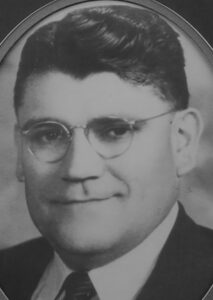
O.E. Hatcher was one of Northwestern’s less popular presidents.
Hatcher brought in a new office staff and got rid of the concept of section heads. He believed that all faculty and staff were beneath him – and him only.
Hatcher improved the training and science courses, but the Castle on the Hill burned down during his tenure.
Sabin C. Percefull
1935 – 1936;
1943 – 1955*
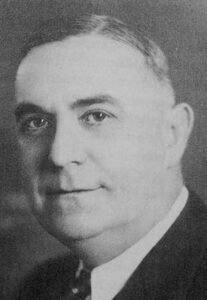
Sabin C. Percefull served as the president of Northwestern four times.
Percefull was tasked with raising funds for new buildings on campus and getting more state funding for the university.
The new science building and the Jesse Dunn buildings that were built in 1936 highlighted Percefull’s time as president during his 1935-1936 tenure.
Percefull’s next term, from 1943 to 1955, was the longest term of any Northwestern president up to that point.
The college converted several prisoner of war barracks into apartments in April 1946. The apartments became known as “Kollege Kamp.”
Plans to revive the annual Homecoming celebration, which had been put on hiatus, started in October 1946.
In the fall of 1948, a guidance counseling office was set up in the school to work with freshmen, and an orientation course became a requirement for freshman.
School officials announced a new school song, written by a 1940 Northwestern graduate, named “Ride, Rangers, Ride,” in March 1949. The 50th commencement in the school’s history also took place in 1949.
Funds were secured for a new physical education building in 1951, although work did not begin until mid-1952.
In January 1953, the Board of Regents named the science annex next to Jesse Dunn the “T.C. Carter Hall.” The natural history museum is credited to Carter.
The board approved a master of teaching degree program in January 1954. Percefull announced his retirement plans that month.
Through his tenure, Percefull was responsible for $1.1 million in new construction, and other projects were pending. The Percefull family donated an assortment of items to the music department before Percefull left office.
*Percefull’s two shorter terms are not listed here.
Ernest E. Brown
1936 – 1939
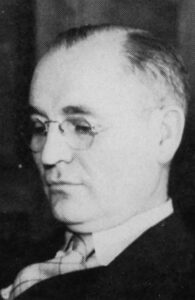
Ernest E. Brown was responsible for the instillation of a master clock that controlled all campus clocks starting in August 1936. Renovations were approved in October 1936 to convert the Science Hall into the Fine Arts building.
In 1937, under Brown’s administration, first lady Eleanor Roosevelt dedicated the Jesse Dunn building.
Plans for two new dormitories were contracted in December 1938. Finished in September 1939, the two dorms were named Minnie Shockley Hall and A.G. Vinson Hall.
In April 1939, the school’s name changed to be Northwestern State College.
Chester O. Newlun
1939 – 1942
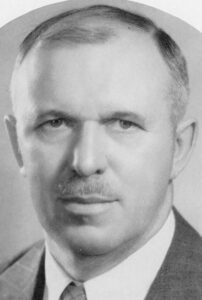
Chester O. Newlun was named president July 31, 1939.
During his presidency, Northwestern received approval to host a government school to train airplane construction workers for the defense industry.
In 1939, the school received approval from the Civil Aeronautics Authority to be an air training center.
The position of dean of men existed for the first time in 1940 under Newlun’s administration.
The school also adopted a policy for students who were drafted or volunteered for military service. They received a full refund of enrollment fees before the 10th week or school or full credit for courses after the 10th week.
Luther D. Brown
1955 – 1956
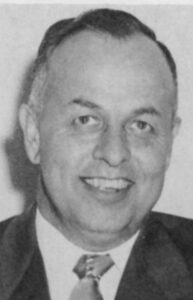
Under Luther D. Brown’s administration, Northwestern became the first college to offer a program for handicapped students as part of the physical education curriculum.
In 1955, Brown-Crossley Construction Co. of Alva remodeled the president’s home, including an addition on the south side, work on the air conditioning and heating systems and the kitchen. The college set up a store to sell textbooks in the Fine Arts building that year.
Housing for male and female students switched locations to prepare for higher enrollment. The names of the buildings, Shockley Hall and Vinson Hall, were also switched. In December 1955, the Student Center was built.
Jesse W. Martin
1956 – 1972
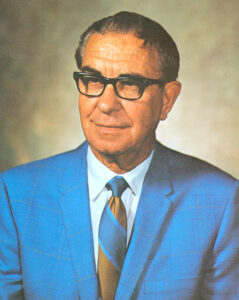
Jesse W. Martin’s administration built the university’s Industrial Arts building.
In February 1958, Kollege Kamp sold at an auction. A few months later, the Northwestern State College Foundation, Inc. was chartered.
Work began on the construction of a new library and science hall in February 1962.
New residence halls were built in the 1960s. The dorm on the northwest corner of campus became known as Oklahoma Hall. Ament Hall became the name of the dorm on the southwest corner, and the newest and biggest dorm was named Coronado Hall.Also in 1968, work on the stadium advanced, and the Northwestern News changed to a weekly paper.
R. William Wygle
1972 – 1975
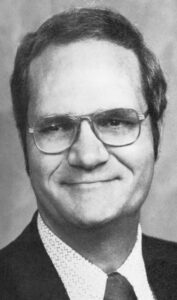
One of the first things R. William Wygle did after he took the office was to establish an admissions office. The office was to be responsible for recruitment, testing programs and pre-admission work.
Naming distinguished graduates and presenting these graduates with Outstanding Alumni Awards was first done in 1973 under Wygle.
Many campus improvement projects started in 1973. A bond announced that fall funded renovations to the Fine Arts Building and a new lighting system for the campus. Later work for the campus included landscaping.
In 1974, the school name changed to Northwestern Oklahoma State University.
Joe J. Struckle
1975 – 2000
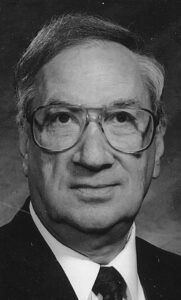
In April 1978, the first evaluations of professors were done by students. This practice continues today with some changes.
In 1978, funds were received to make improvements to facilities, including an all-weather track at Ranger Field, softball fields and new tennis courts.
A degree program in nursing was approved in December 1980.
The land the university had for the school farm was given up in 1984 when the City of Alva needed to trade it. To keep the program, the school purchased 160 acres of land a little over seven miles west of town that October.
House Bill 2164 was introduced and passed as the 1995-1996 school year ended. This bill established Northwestern campuses in Enid and Woodward.
Tom J. McDaniel
2000 – 2001

The first graduate of Northwestern to become the president of the university was Tom J. McDaniel.
Dr. Stephen Thompson, a professor of biology, said McDaniel brought a lot of excitement to the campus with his new ideas.
Having no previous experience in higher education, McDaniel planned to rely on the vice president for academic affairs and his lower-level staff.
McDaniel left Northwestern in 2001 to become president at Oklahoma City University.
Paul B. Beran
2001 – 2006
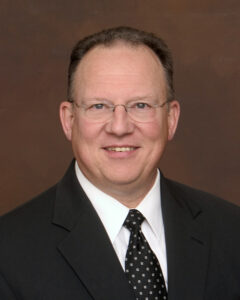
The resignation of McDaniel brought an outsider to the campus. Paul B. Beran took the office in 2001.
Dr. Roger Hardaway, who has been at Northwestern since 1990, remembers when Beran came into office.
“His whole career had been in higher education,” Hardaway said. “He had never been a president … and he had been at large community colleges in Houston, St. Louis and Boston.”
Throughout Beran’s time at Northwestern, a coffee shop was put in Coronado Hall. The tradition of faculty and staff putting an ornament on a Christmas tree in the president’s house started. Beran was also the first president of the university to attend department meetings rather than large faculty meetings.
Janet Cunningham
2006 – 2022

The first female president of Northwestern, Janet Cunningham took office in 2006. In early 2022, she announced her plans to retire that June.
Cunningham’s administration was responsible for the university sports teams’ move to NCAA Division II. During her tenure, the university has remodeled buildings and added new academic programs.
For a full-length feature of Cunningham’s career, visit the Northwestern News website or read the Jan. 20 edition of the paper.
Online readers can access the article by following this link: https://northwesternnews.rangerpulse.com/as-first-female-president-of-northwestern-cunningham-leaves-legacy-of-leadership/.



